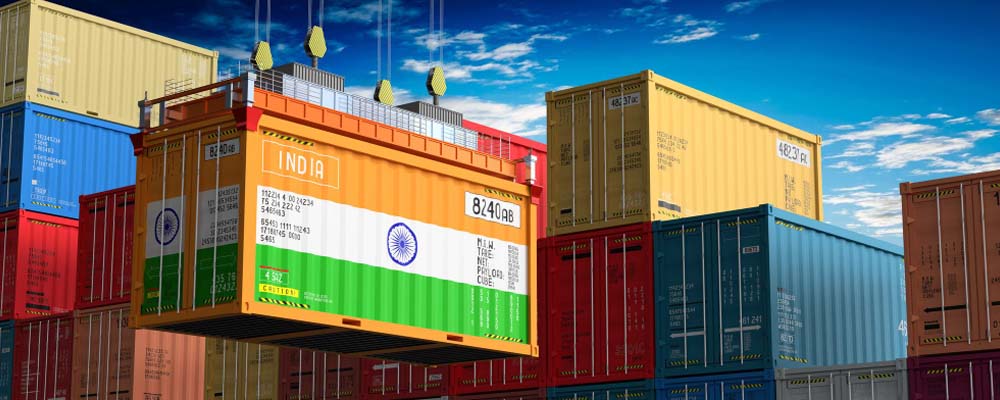
Are you considering expanding your business into one of the world’s fastest-growing economies? Exporting to India could be a golden opportunity for you, whether you’re a freight forwarding company, logistics provider, or an e-commerce business. With an extensive and diversified market, the potential for growth is immense. This guide will walk you through everything you need to know about successfully exporting to India, from understanding the Indian market to navigating customs procedures and beyond. By the end of this post, you’ll be well-equipped to take that next big step in international trade.
Understanding the Indian Market
India boasts a GDP that ranks among the world’s largest, making it an attractive destination for exporters worldwide. The country’s diverse states and territories each have unique market dynamics and consumer behaviors. It’s crucial to conduct thorough market research to understand regional demand and cultural nuances.
Consumer Behavior and Demand
Indian consumers are increasingly leaning towards quality over quantity. There is a growing middle class with increased purchasing power, which translates into higher demand for imported goods. Key sectors include electronics, automobiles, healthcare products, and high-end fashion.
Regional Market Dynamics
Different regions in India have distinct economic activities. For instance, the southern states like Karnataka and Tamil Nadu are tech hubs, while the northern states like Punjab and Haryana are agricultural powerhouses. Identifying your target region can significantly improve your market penetration strategy.
Cultural Sensitivities
Understanding and respecting cultural norms and practices can go a long way in building customer loyalty. Simple gestures, such as using local languages in marketing materials, can make a significant difference.
Regulatory Environment
Exporting to India involves navigating a complex regulatory environment. Familiarize yourself with the key regulations to ensure a smooth entry into the market.
Import Duties and Taxes
India imposes various import duties, including Basic Customs Duty (BCD), Countervailing Duty (CVD), and Integrated Goods and Services Tax (IGST). Understanding these taxes and incorporating them into your pricing strategy is essential.
Licensing and Permissions
Certain goods require specific licenses or permits for import. For example, electronic items need clearance from the Bureau of Indian Standards (BIS). Ensure that you have all necessary permits to avoid delays and legal issues.
Compliance with Indian Standards
Products imported into India must comply with local standards and regulations. This could involve obtaining certifications or passing quality checks. It’s advisable to get in touch with local regulatory bodies for precise guidelines.
Shipping and Logistics
Efficient logistics can make or break your exporting venture. Here’s how to optimize your shipping operations to India.
Choosing the Right Freight Forwarder
Selecting a reliable freight forwarder can simplify your export process. Look for companies with experience in Indian logistics, who can handle everything from documentation to customs clearance.
Understanding Shipping Routes
India boasts several major ports, including Mumbai, Chennai, and Kolkata. Each port has its pros and cons, depending on your product type and target market. Evaluate the most efficient routes to minimize transit time and costs.
Last-Mile Delivery
Last-mile delivery can be challenging in India due to varying infrastructure quality across regions. Partnering with local logistics providers can ensure timely and safe delivery to your customers.
 Customs Procedures
Customs Procedures
Navigating customs is a crucial step in exporting to India. Being well-prepared can save you time and money.
Documentation Requirements
Ensure you have all necessary documents, including the Bill of Lading, Commercial Invoice, Packing List, and Certificate of Origin. Proper documentation can expedite the customs clearance process.
Customs Clearance
Customs clearance in India involves several steps, including goods declaration, inspection, and payment of duties. Engaging a local customs broker can help you maneuver through these steps efficiently.
Avoiding Common Pitfalls
Common issues like incorrect documentation or non-compliance with local standards can result in delays and fines. Double-check all paperwork and stay updated on regulatory changes to avoid such pitfalls.
Payment Methods and Financial Considerations
Handling payments efficiently is crucial for successful international trade. Here are some recommended practices.
Secure Payment Methods
Opt for secure payment methods like Letters of Credit (LC) or Bank Guarantees to mitigate risks. These methods offer protection against default and ensure timely payments.
Currency Exchange and Risks
Variations in currency exchange rates can significantly influence your profitability. Consider using hedging instruments to protect against unfavorable exchange rate movements.
Managing Financial Transactions
Working with banks that have a presence in both your home country and India can simplify transactions. They can offer tailored solutions for international trade financing.
 Marketing and Sales Strategies
Marketing and Sales Strategies
A well-thought-out marketing and sales strategy can give you a competitive edge in the Indian market.
Digital Marketing
Leverage digital marketing channels like social media, search engine optimization (SEO), and email campaigns to reach your target audience. Platforms like Facebook, Instagram, and LinkedIn are quite popular in India.
Building Local Partnerships
Collaborating with local distributors or agents can help you gain market insights and reach a broader audience. They can also assist in navigating local regulations and cultural nuances.
Participating in Trade Shows
Participating in trade shows and exhibitions can provide valuable exposure and networking opportunities. It’s a great way to showcase your products and meet potential business partners.
Customer Service and Support
High-quality customer service can set you apart from competitors and build long-term customer loyalty.
Establishing Local Support
Providing local customer support can enhance customer satisfaction. Consider setting up a local office or partnering with a customer service provider in India.
Handling Returns and Complaints
Efficiently handling returns and complaints is crucial for maintaining a positive brand image. Have clear policies in place and ensure they are communicated to your customers.
Gathering Customer Feedback
Regularly gather and analyze customer feedback to improve your products and services. This can help you stay aligned with market demands and enhance customer satisfaction.
Intellectual Property Protection
Protecting your intellectual property (IP) is vital when entering the Indian market.
Registering Your IP
Ensure you register your trademarks, patents, and copyrights in India to protect against infringement. Local legal firms can assist you with the registration process.
Monitoring IP Violations
Regularly monitor the market for potential IP violations. Taking prompt action against infringers can safeguard your brand’s reputation.
Legal Recourse
Familiarize yourself with the legal options available in case of IP disputes. Having a local legal advisor can be invaluable in navigating such situations.
Risk Management
Effective risk management is crucial for successful exporting ventures.
Political and Economic Risks
Keep an eye on political and economic developments in India that could impact your business. Diversifying your market presence can mitigate some of these risks.
Supply Chain Risks
Identify potential risks in your supply chain and have contingency plans in place. This could involve having alternative suppliers or routes.
Legal and Compliance Risks
Keep informed about regulatory changes and ensure compliance to prevent legal complications. Regular audits can help identify and mitigate compliance risks.
Sustainability and Ethical Practices
Modern consumers and businesses increasingly value sustainability and ethical practices.
Sustainable Sourcing
Ensure your products are sourced sustainably. This can enhance your brand’s reputation and appeal to eco-conscious consumers.
Fair Trade Practices
Adopt fair trade practices to ensure ethical treatment of workers in your supply chain. This can foster customer loyalty and positive brand perception.
Corporate Social Responsibility (CSR)
Engage in CSR activities in India to give back to the community. This can improve your brand’s image and build stronger customer relationships.
 Conclusion
Conclusion
Exporting to India offers immense opportunities, but it requires careful planning and execution. By understanding the market, navigating regulatory requirements, and optimizing logistics, you can successfully enter and thrive in this dynamic market. Always keep in mind that the key to success is continuous learning and adaptation. If you’re ready to take the plunge, start by leveraging the insights shared in this guide. Happy exporting!




 Customs Procedures
Customs Procedures Marketing and Sales Strategies
Marketing and Sales Strategies Conclusion
Conclusion



